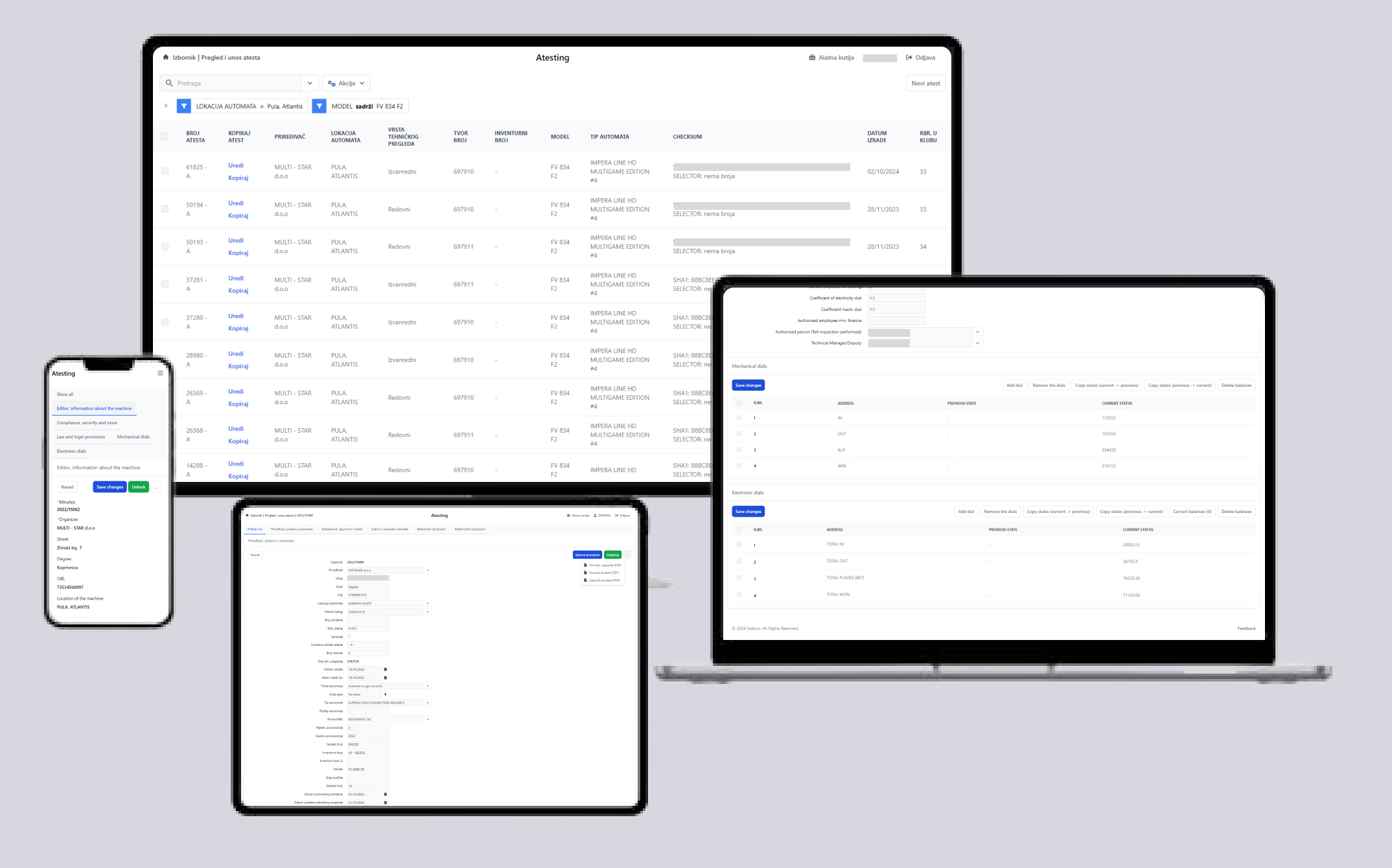Gambling Validation & Stats for Machines and Servers.


In mid-2024. we began cooperating with a large certification firm specialized in validating gambling machines and their related systems. We offered to create a more optimized, stable and generally flexible system which would allow them to more easily digitize their certification paperwork as well as other day-to-day office duties.
Read on to find out how the project was delivered.
At our first meeting we went over their current software, its abilities and the problems they've encountered while using it. We also collected the impressions of their workers, their suggestions and potential new features that would make their jobs significantly easier.
After collecting all the project requirements and settling on a price, we proceeded to split the development process into multiple phases:
Our first obstacle was extracting the relevant data from their Oracle APEX installation and migrating it to a MariaDB installation which we deemed suitable after examining APEX's architecture and use of the Oracle Database. Creating an access user and finding the correct database, all while knowing next to nothing about APEX or the Oracle Database, certainly was a challenge; however, one that we have managed to surpass.
Per the project requirements, we decided to follow the design schemes of the previous software as to allow for an easier transition into the new software. Once we had recreated all of the pages present in the previous software, we could then start adding the functionality for each one; requiring us to switch between the frontend and backend in order to rebuild all of the functions, one at a time.
Having recreated all of the functions the previous software provided, we moved onto QA testing every single page; the problems we found were minimal, as we knew we could only find so much on our own, and that is when we allowed unlimited access to everyone at the firm.
Fairly soon, the report rate started dropping and we all agreed that it was time to deploy the project into production, leaving the previous software on-line as a fallback in case anything major popped-up. The pushing to production was pretty straight-forward, we took all of our previously scattered pieces of infrastructure and moved them all to a single centralized server to function as one coherent whole.
Lastly we migrated the client's remaining services as well; including an email server, a private cloud-based file storage installation, and a WordPress website to name a few, all connected to their domain name and with configured access points as well as firewall rules to limit potential outside threats.
OUR WORK